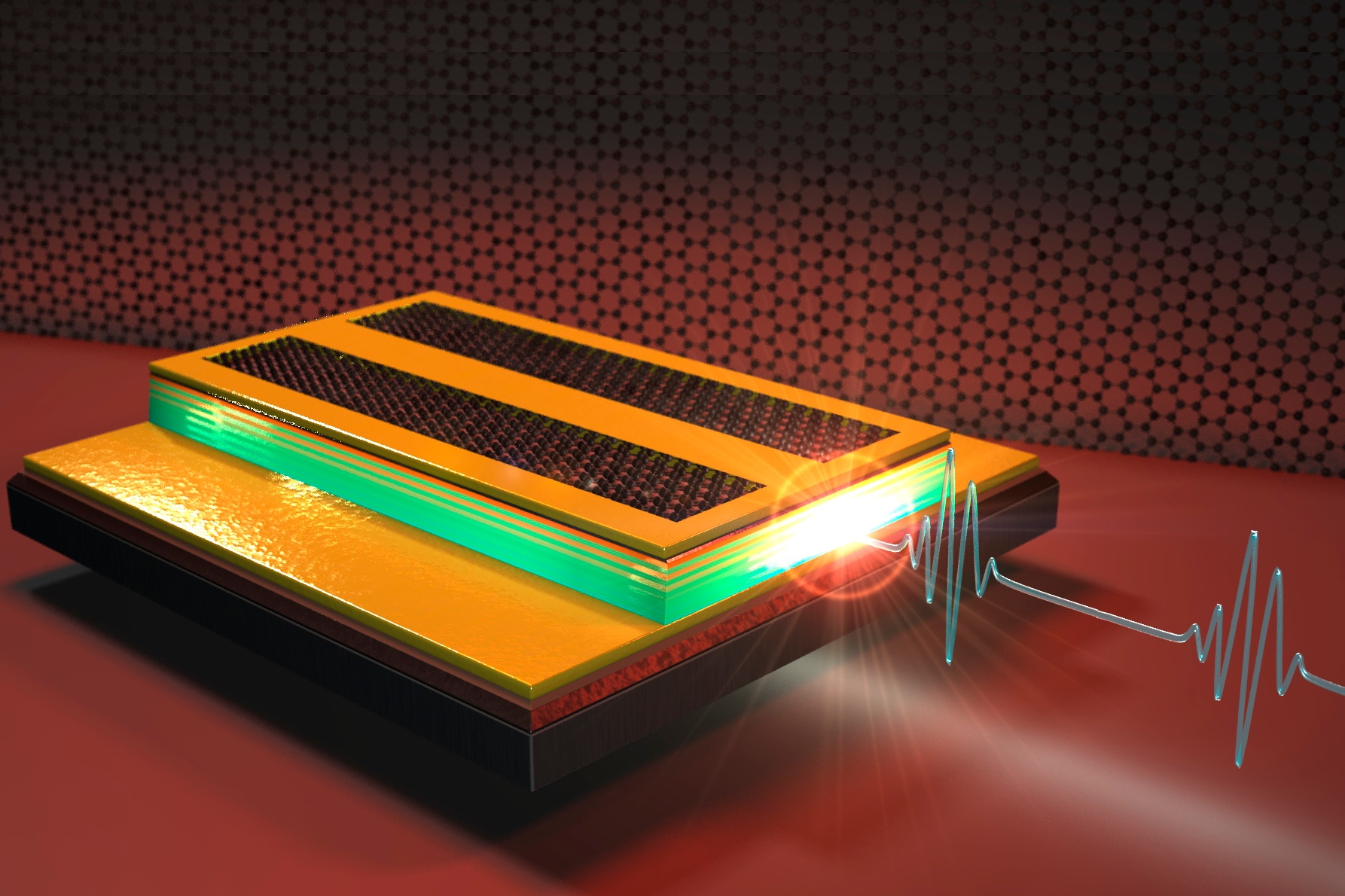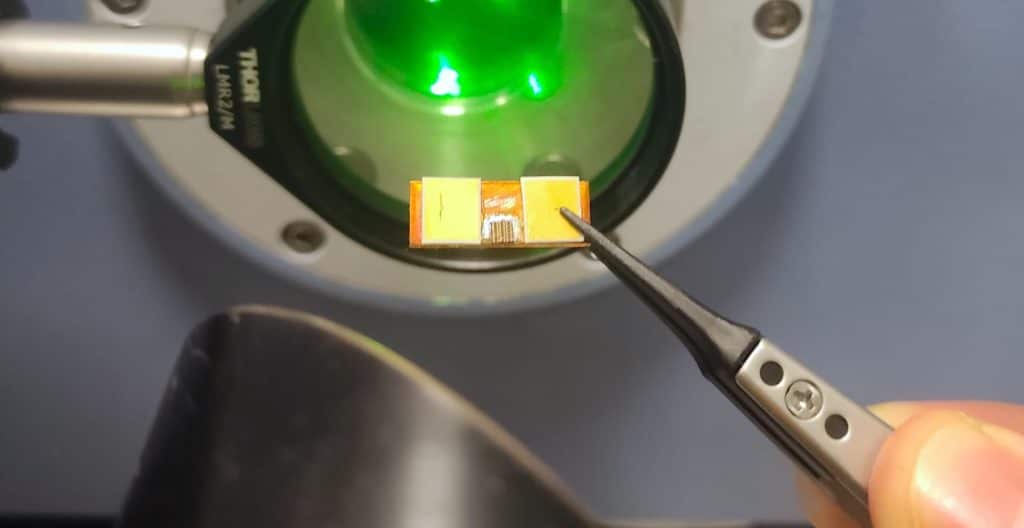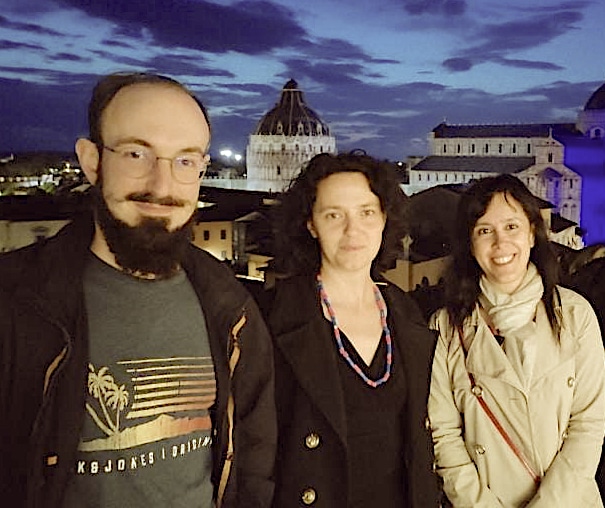
 The heterogeneous gain medium employed in the device has been developed at the University of Leeds by the group of Professor Giles Davies, and Professor Edmund Linfield; while the cavity architecture that integrates a saturable graphene absorber, grown at the Cambridge Graphene Center, was designed and built at Nest laboratory of Istituto Nanoscienze and Scuola Normale Superiore in Pisa, by Vitiello, Elisa Riccardi and Valentino Pistore.
The researchers note that this is the first ever demonstration of the possibility of generating short pulses passively, i.e. spontaneously, in a quantum cascade laser. "We take advantage of the high transparency modulation and fast recovery time of about 2-3 picoseconds of graphene saturable absorption, which favors pulsed emission over naturally occurring continuous wave emission", scientists explain.
Such an ultrafast technology in underexploited areas of the Terahertz frequency range, with unprecedented sensitivity and spectral resolution opens opportunities for novel long-term research. For example the investigations of ultrafast dynamics, real-time image reconstructions, tomographic measurements, and time-resolved spectroscopy of gases or complex molecules. It also envisages important perspectives in quantum science, as the coherent control of quantum systems, and in quantum optics, exploiting fast pulses that can bring molecular samples out of equilibrium, as well as in metrology and very high-speed communications.
Furthermore, the developed Terahertz micro-lasers can become an innovative and compact alternative to bulky systems currently in use, promising an impact in areas such as biomedical image reconstruction, security scanning, process and quality control and cultural heritage.
The research at Cnr Nano was funded by the ERC Grant SPRINT and by the Graphene Flagship.
The heterogeneous gain medium employed in the device has been developed at the University of Leeds by the group of Professor Giles Davies, and Professor Edmund Linfield; while the cavity architecture that integrates a saturable graphene absorber, grown at the Cambridge Graphene Center, was designed and built at Nest laboratory of Istituto Nanoscienze and Scuola Normale Superiore in Pisa, by Vitiello, Elisa Riccardi and Valentino Pistore.
The researchers note that this is the first ever demonstration of the possibility of generating short pulses passively, i.e. spontaneously, in a quantum cascade laser. "We take advantage of the high transparency modulation and fast recovery time of about 2-3 picoseconds of graphene saturable absorption, which favors pulsed emission over naturally occurring continuous wave emission", scientists explain.
Such an ultrafast technology in underexploited areas of the Terahertz frequency range, with unprecedented sensitivity and spectral resolution opens opportunities for novel long-term research. For example the investigations of ultrafast dynamics, real-time image reconstructions, tomographic measurements, and time-resolved spectroscopy of gases or complex molecules. It also envisages important perspectives in quantum science, as the coherent control of quantum systems, and in quantum optics, exploiting fast pulses that can bring molecular samples out of equilibrium, as well as in metrology and very high-speed communications.
Furthermore, the developed Terahertz micro-lasers can become an innovative and compact alternative to bulky systems currently in use, promising an impact in areas such as biomedical image reconstruction, security scanning, process and quality control and cultural heritage.
The research at Cnr Nano was funded by the ERC Grant SPRINT and by the Graphene Flagship.

Istituto Nanoscienze
Consiglio Nazionale delle Ricerche
PEC: protocollo.nano@pec.cnr.it
Partita IVA 02118311006
Piazza San Silvestro 12
56127 Pisa, Italy
phone +39 050 509418
fax +39 050 509550
Istituto Nanoscienze Consiglio Nazionale delle Ricerche
Piazza San Silvestro 12, I
56127 Pisa
phone +39 050 509525/418
fax +39 050 509550
via Campi 213/A, I
41125 Modena 7
phone +39 059 2055629
fax +39 059 2055651″
| Cookie | Duration | Description |
|---|---|---|
| cookielawinfo-checkbox-analytics | 11 months | This cookie is set by GDPR Cookie Consent plugin. The cookie is used to store the user consent for the cookies in the category "Analytics". |
| cookielawinfo-checkbox-functional | 11 months | The cookie is set by GDPR cookie consent to record the user consent for the cookies in the category "Functional". |
| cookielawinfo-checkbox-necessary | 11 months | This cookie is set by GDPR Cookie Consent plugin. The cookies is used to store the user consent for the cookies in the category "Necessary". |
| cookielawinfo-checkbox-others | 11 months | This cookie is set by GDPR Cookie Consent plugin. The cookie is used to store the user consent for the cookies in the category "Other. |
| cookielawinfo-checkbox-performance | 11 months | This cookie is set by GDPR Cookie Consent plugin. The cookie is used to store the user consent for the cookies in the category "Performance". |
| viewed_cookie_policy | 11 months | The cookie is set by the GDPR Cookie Consent plugin and is used to store whether or not user has consented to the use of cookies. It does not store any personal data. |